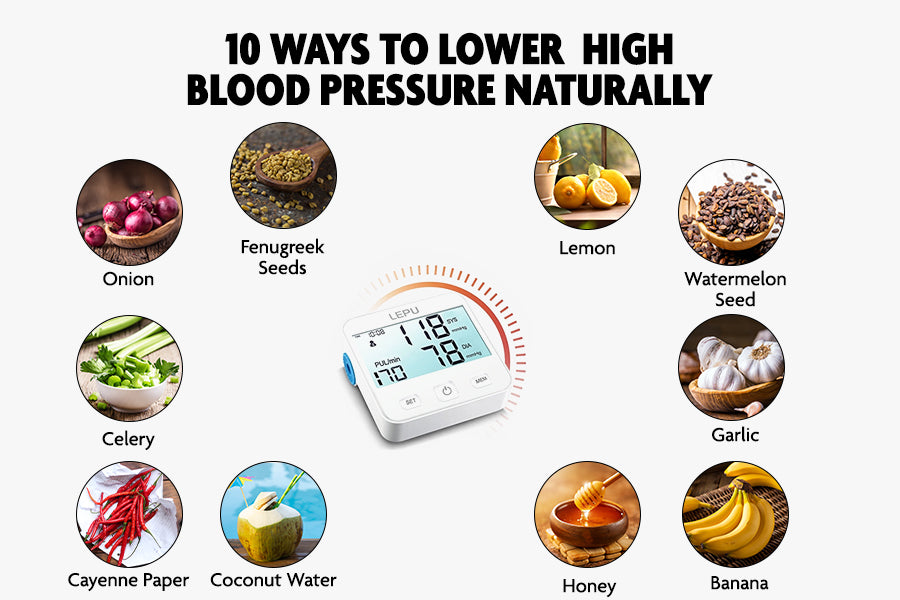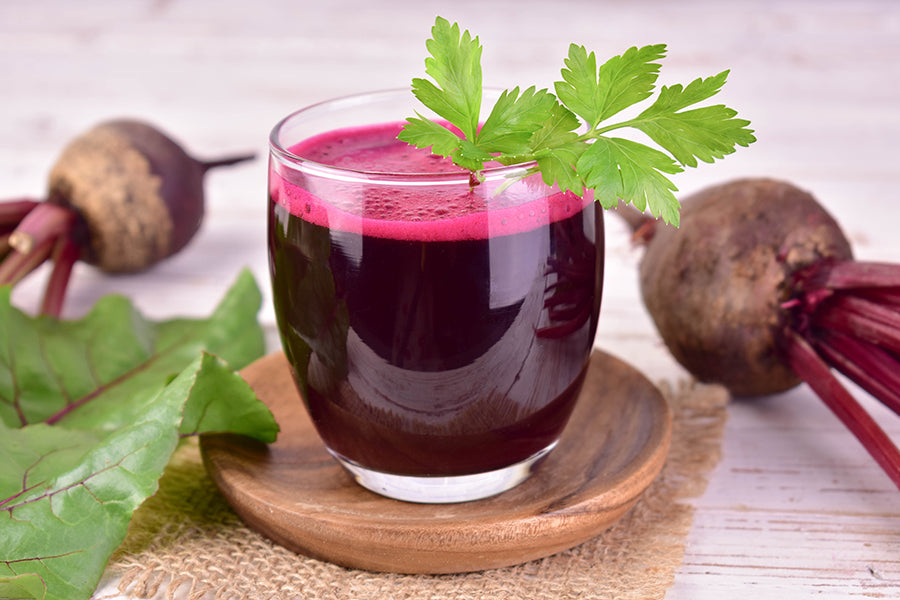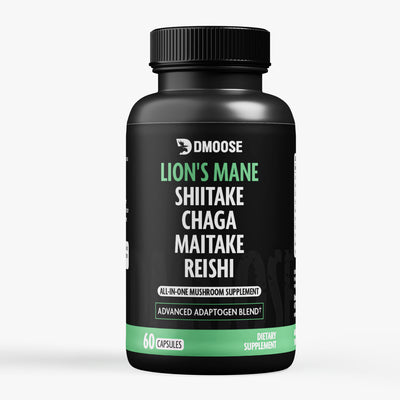Feeling tired, stressed, or constantly on edge? It might be more than just a rough day! Your blood pressure could be quietly working against you.
Left unmanaged, it quietly damages your heart, brain, and arteries, increasing the risk of heart attack, stroke, and kidney disease.
The good news? You don’t need to rely on medications alone to take control.
In this article, we’ll uncover 20 natural, research-backed strategies that can help you lower your blood pressure and reclaim your energy, focus, and overall well-being.
What is Normal Blood Pressure by Age?

Normal blood pressure can vary depending on age, overall health, and individual factors. While general targets exist, it’s important to understand that what’s considered "normal" may differ slightly from person to person.
Blood pressure is measured in millimeters of mercury (mm Hg) and is recorded as two values: systolic pressure (the force when your heart beats) over diastolic pressure (the force when your heart rests between beats).
Below are commonly referenced guidelines for normal blood pressure ranges by age group:
Age Group |
Systolic Pressure |
Diastolic Pressure |
| Children (3–12 years) | 80–110 mm Hg | 50–70 mm Hg |
| Adolescents (13–18 years) | 90–120 mm Hg | 60–80 mm Hg |
| Adults (18 years & older) | Less than 120 mm Hg | Less than 80 mm Hg |
According to the American Heart Association, a normal adult blood pressure reading is typically under 120/80 mm Hg. Readings consistently above this may indicate elevated or high blood pressure, which warrants medical attention.
Keep in mind that factors such as physical activity, stress levels, medications, and underlying health conditions can also influence your readings. Regular monitoring and consultation with a healthcare provider are essential for maintaining optimal heart health.
How to Reduce High Blood Pressure Naturally?

Making lifestyle changes is one of the most effective ways to manage high blood pressure without medication. While drugs may offer fast relief, natural approaches provide lasting results and fewer side effects.
Using a proper diet, along with physical activity and adequate sleep, can significantly improve blood pressure levels. Let’s explore some proven strategies you can start implementing today:
1. Consuming a Heart-Healthy Diet
The DASH diet—Dietary Approaches to Stop Hypertension—is specifically designed to support heart health. It emphasizes vegetables, fruits, whole grains, lean proteins, and low-fat dairy, while limiting salt, sugar, and saturated fats.
Reducing sodium intake to under 2,300 mg per day (or ideally 1,500 mg for most adults) can significantly lower blood pressure. Pair this with foods rich in fiber, antioxidants, and healthy fats to support optimal cardiovascular function.
2. Staying Physically Active
Regular aerobic activity strengthens the heart and improves circulation, making it easier for your body to regulate blood pressure. Aim for at least 150 minutes of moderate-intensity exercise per week.
Simple activities like brisk walking, cycling, or dancing can make a big difference. Even short bouts of movement throughout the day add up and help prevent spikes in blood pressure.
3. Getting Adequate Sleep

Consistently getting 7–9 hours of quality sleep is essential for blood pressure regulation. Poor sleep increases stress hormones, which can cause blood vessels to constrict.
Establish a calming bedtime routine, limit caffeine late in the day, and reduce screen time before sleep. Addressing sleep disorders like sleep apnea is also critical for managing hypertension.
4. Eating Potassium-Rich Foods
Potassium helps the body flush out excess sodium, which directly lowers blood pressure. It also relaxes blood vessel walls and improves overall circulation.
Include foods like bananas, oranges, spinach, avocados, sweet potatoes, and beans in your daily meals. These natural sources of potassium are both heart-friendly and delicious.
5. Choosing Whole Grains
Whole grains are rich in fiber, antioxidants, and essential nutrients that support cardiovascular health. Unlike refined grains, they help stabilize blood sugar and promote lower blood pressure.
Switch from white rice to brown rice, white bread to whole wheat, and consider adding oats or quinoa to your meals. These grains are not only nutritious but also satisfying and versatile.
6. Considering Natural Supplements
Supplements such as magnesium, omega-3 fatty acids, and coenzyme Q10 have shown potential in supporting healthy blood pressure. These natural ingredients can complement a healthy lifestyle when used correctly.
Choose high-quality, non-GMO formulas without synthetic additives. Always consult with a healthcare professional before starting any supplement, especially if you’re on blood pressure medication.
Combining these strategies consistently can create a meaningful and lasting improvement in your blood pressure. Small daily choices, when done right, lead to powerful long-term results.
7. Having Omega-3 Fatty Acids

Omega-3 fatty acids, found in fatty fish such as salmon, mackerel, and sardines, are well-known for their heart-protective benefits. They help reduce inflammation, improve arterial function, and lower triglyceride levels.
Regular intake—whether from whole foods or supplements—can contribute to lower blood pressure and improve overall heart health. Aim for two servings of fatty fish per week or consult your doctor for a quality supplement.
8. Incorporating Garlic
Garlic contains allicin, a compound that may support blood vessel dilation and reduce blood pressure. It has been shown in some clinical studies to produce modest improvements in both systolic and diastolic pressure.
You can add fresh garlic to your meals, use aged garlic extract, or take it in supplement form. It’s a simple, flavorful way to support your cardiovascular health naturally.
9. Sipping Hibiscus Tea
Hibiscus tea is rich in antioxidants and anthocyanins that may help reduce blood pressure levels. Drinking it regularly may improve blood vessel function and reduce oxidative stress.
This herbal tea is naturally caffeine-free and makes a refreshing alternative to sugary drinks. For best results, enjoy it unsweetened 1–2 times a day.
10. Drinking Beetroot Juice

Beetroot juice is a powerful natural source of dietary nitrates, which convert into nitric oxide in the body. This helps relax blood vessels and improves blood flow, reducing blood pressure.
Drinking a glass of beetroot juice daily has been shown in studies to produce noticeable improvements in blood pressure. It's especially beneficial before exercise for enhanced performance and vascular support.
11. Consuming More Magnesium-Rich Foods
Magnesium helps regulate various physiological functions, including muscle contraction and blood vessel tone. Low magnesium levels have been associated with higher blood pressure in multiple population studies.
Incorporate foods like leafy greens, almonds, sunflower seeds, whole grains, and black beans to meet your magnesium needs. These nutrient-dense foods support both blood pressure control and general wellness.
12. Limiting Processed Foods
Processed and packaged foods are often loaded with excess sodium, trans fats, and preservatives—all of which can raise blood pressure and strain the heart. Even seemingly "healthy" convenience foods can contain hidden salt and sugar.
Focus on whole, minimally processed foods like fresh fruits, vegetables, lean proteins, and grains. Reading food labels carefully can help you make smarter choices and avoid hidden sodium traps.
13. Doing Yoga and Meditation

Practicing yoga and meditation regularly can reduce stress levels and promote emotional balance. These mind-body techniques have been linked to lower cortisol levels and improved cardiovascular function.
Incorporating breathing exercises and mindfulness practices into your routine may help promote relaxation and stabilize blood pressure. Just 10–15 minutes a day can make a measurable difference over time.
14. Sipping Pomegranate Juice
Pomegranate juice is packed with antioxidants, particularly polyphenols, which may help reduce inflammation and support healthy blood vessel function. Some studies suggest it may lower systolic blood pressure with regular intake.
Enjoy one small glass of unsweetened pomegranate juice daily as part of a heart-healthy diet. Just be mindful of portion size due to its natural sugar content.
15. Treating Yourself with Moderate Dark Chocolate
Dark chocolate with at least 70% cocoa contains flavonoids—plant compounds that help improve blood flow and reduce blood pressure. These flavonoids may stimulate nitric oxide production, helping blood vessels relax.
Enjoy it in moderation—about 1 square (10–20g) a few times per week is sufficient. Avoid chocolates with added sugar or milk fat to retain the benefits.
16. Limiting Sugar

High sugar intake, particularly from processed foods and sweetened drinks, has been linked to increased blood pressure and metabolic disorders. It can also lead to weight gain, which further raises hypertension risk.
Cut back on added sugars by reading food labels and reducing consumption of sodas, candies, pastries, and sugary cereals. Replace them with naturally sweet foods like fruits.
17. Managing Stress
Chronic stress can raise blood pressure by triggering the release of stress hormones like adrenaline and cortisol. Over time, this leads to constricted blood vessels and an increased heart rate.
Manage stress through practices like deep breathing, yoga, tai chi, journaling, or spending time in nature. Finding healthy outlets is key to long-term blood pressure control.
18. Avoiding Alcohol
Alcohol can raise blood pressure, especially when consumed in excess. Over time, heavy drinking weakens the heart and interferes with the effectiveness of blood pressure medications.
If you choose to drink, do so in moderation—no more than one drink per day for women and two for men. Consider alcohol-free days each week to support heart health.
19. Maintain Healthy Weight

Excess body weight puts added strain on your heart and blood vessels, contributing to elevated blood pressure. Even modest weight loss—just 5–10% of body weight—can lead to significant improvement.
Combine a balanced diet with regular physical activity to achieve and maintain a healthy weight. This not only helps lower blood pressure but also improves overall health markers.
20. Quitting Smoking
Smoking damages the lining of your blood vessels, causes inflammation, and leads to narrowing of the arteries. It significantly raises your risk of heart disease and hypertension.
Quitting smoking has immediate and long-term benefits for blood pressure and cardiovascular health. Seek support through counseling, nicotine replacement therapy, or apps designed to help you quit.
What Causes High Blood Pressure? 7 Things to Be Aware of

High blood pressure, also known as hypertension, occurs when the force of blood against the walls of your arteries remains consistently elevated. Over time, this can lead to serious health issues, including heart disease, stroke, and kidney damage.
Understanding the root causes of high blood pressure can help you take steps to prevent or manage it more effectively. Here are seven key factors that contribute to elevated blood pressure:
1. Unhealthy Eating Habits
Diets high in sodium and low in fruits, vegetables, and potassium can significantly increase your risk of hypertension. Excess salt causes your body to retain water, increasing blood volume and pressure on artery walls.
Processed foods, fast food, and restaurant meals are common culprits. Prioritizing whole foods and reducing sodium intake can have an immediate positive impact on your blood pressure.
2. Obesity
Carrying extra weight increases the workload on your heart and blood vessels. As your body mass rises, your heart must pump more blood to supply oxygen and nutrients to tissues.
This increased demand raises pressure within your arteries. Even a modest weight loss of 5–10% can lead to meaningful improvements in blood pressure.
3. Sedentary Lifestyle

Physical inactivity can lead to a weaker heart and poor circulation. Without regular movement, your cardiovascular system becomes less efficient over time.
Engaging in regular physical activity strengthens your heart, improves blood flow, and helps lower blood pressure naturally.
4. Stress Hormones
When you're under stress, your body releases adrenaline and cortisol, which temporarily raise blood pressure by tightening blood vessels and increasing heart rate. This response is useful in emergencies but harmful when persistent.
Chronic stress can lead to sustained high blood pressure, especially when combined with poor coping habits like overeating or drinking. Stress management techniques can reduce both immediate and long-term cardiovascular strain.
5. Liquor Consumption
Excessive alcohol consumption is a known risk factor for hypertension. Drinking in large amounts can damage your heart, increase body weight, and interfere with blood pressure medications.
It's essential to drink in moderation—up to one drink per day for women and up to two for men. Reducing alcohol intake can help lower your blood pressure and improve overall heart health.
6. Smoking

The chemicals in tobacco damage the lining of your arteries, causing them to narrow and harden. This directly raises blood pressure and increases the risk of heart disease and stroke.
Smoking also reduces the effectiveness of blood pressure medications and accelerates plaque buildup in the arteries. Quitting smoking is one of the most impactful changes you can make for your cardiovascular health.
7. Genetics
Family history plays a role in high blood pressure. If your parents or close relatives have hypertension, your risk may be higher due to inherited genetic traits and shared lifestyle habits.
While you can’t change your genes, you can manage your risk through healthy choices. Routine blood pressure monitoring is essential if you have a family history of hypertension.
FAQs
1. Can you have a heart attack with normal blood pressure and pulse?
Yes, it is possible to have a heart attack even if your blood pressure and pulse are within normal ranges. These measures don’t reflect the full picture—underlying issues such as blocked arteries, inflammation, or clot formation can still trigger a cardiac event.
2. Can you have heart problems with normal blood pressure?
Yes, heart conditions can still develop despite having normal blood pressure. Factors like high cholesterol, poor diet, physical inactivity, smoking, and genetics all contribute to cardiovascular disease risk.
3. Does exercise lower blood pressure?
Yes, regular physical activity strengthens the heart and improves blood flow, which helps lower blood pressure. Aerobic exercises like walking, cycling, and swimming are especially effective when performed consistently.
4. What can I drink to lower blood pressure quickly?
Drinks such as hibiscus tea and beetroot juice may help lower blood pressure due to their vasodilatory and nitrate-rich properties. These can offer short-term benefits when paired with a healthy lifestyle.
5. How quickly does magnesium lower blood pressure?
Magnesium supplementation may begin to reduce blood pressure within 3–6 weeks, depending on dosage and individual health factors. For best results, it should be taken consistently as part of a balanced diet and wellness plan.
Conclusion
Managing high blood pressure doesn't always require medication. Sometimes, the most effective solutions come from consistent, natural changes to your daily routine. From eating heart-healthy foods and staying physically active to managing stress and improving sleep, each small step contributes to better cardiovascular health.
Understanding the causes, taking preventive action, and staying informed can empower you to take control of your health. Start with the tips that fit your lifestyle best and build from there. Your heart will thank you for it.
Related Articles
The DASH Diet Plan: 7 Day Plan to Lower Blood Pressure & Control Hypertension
Surprise Findings: Young People With Undetected High Blood Pressure Unmasked!
7-Day No-Sugar Meal Plan for High Blood Pressure
5 Risk Factors of Cardiovascular Diseases & How to Prevent It
Want to Boost Your Heart Health? Include These 5 Foods Into Your Diet










